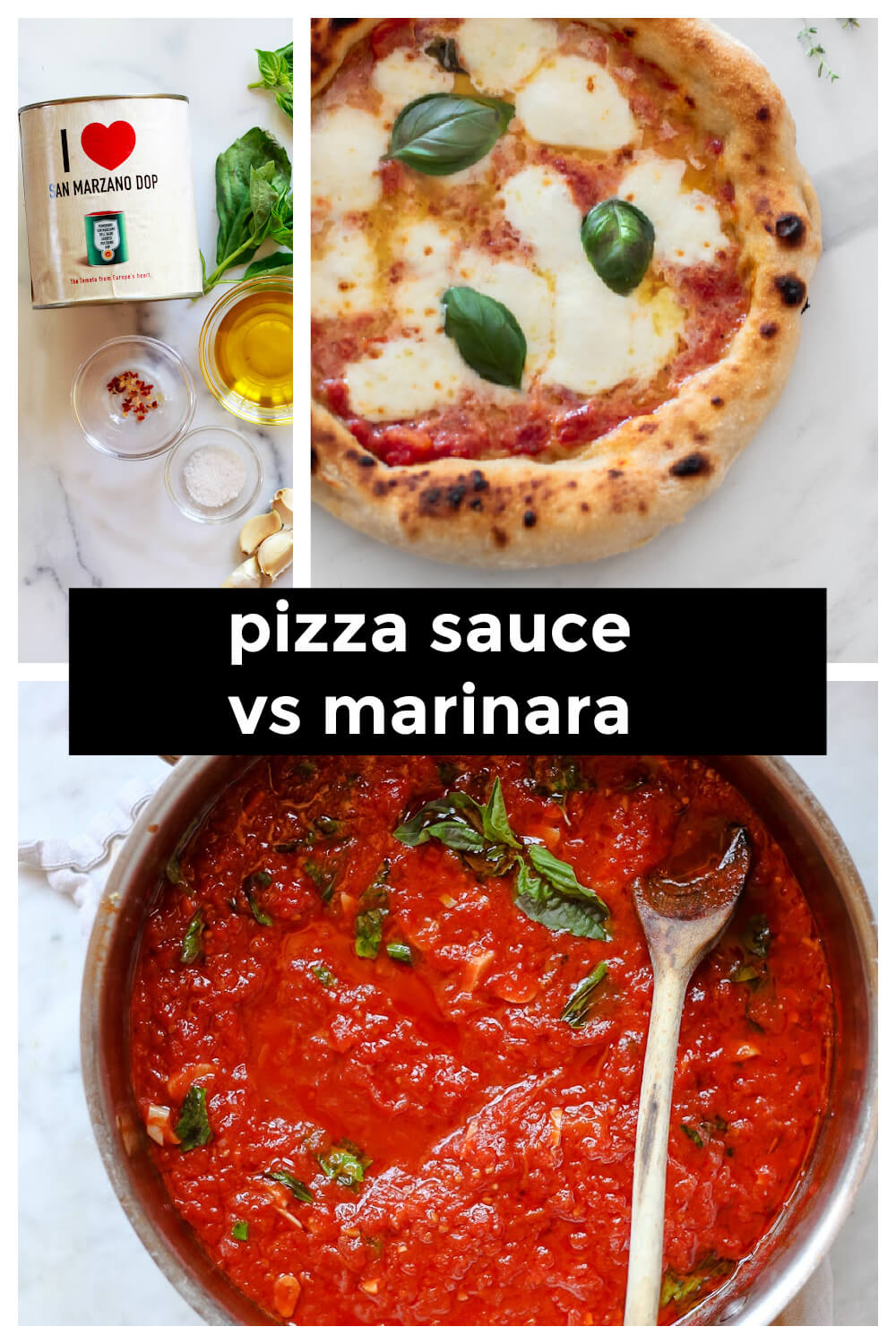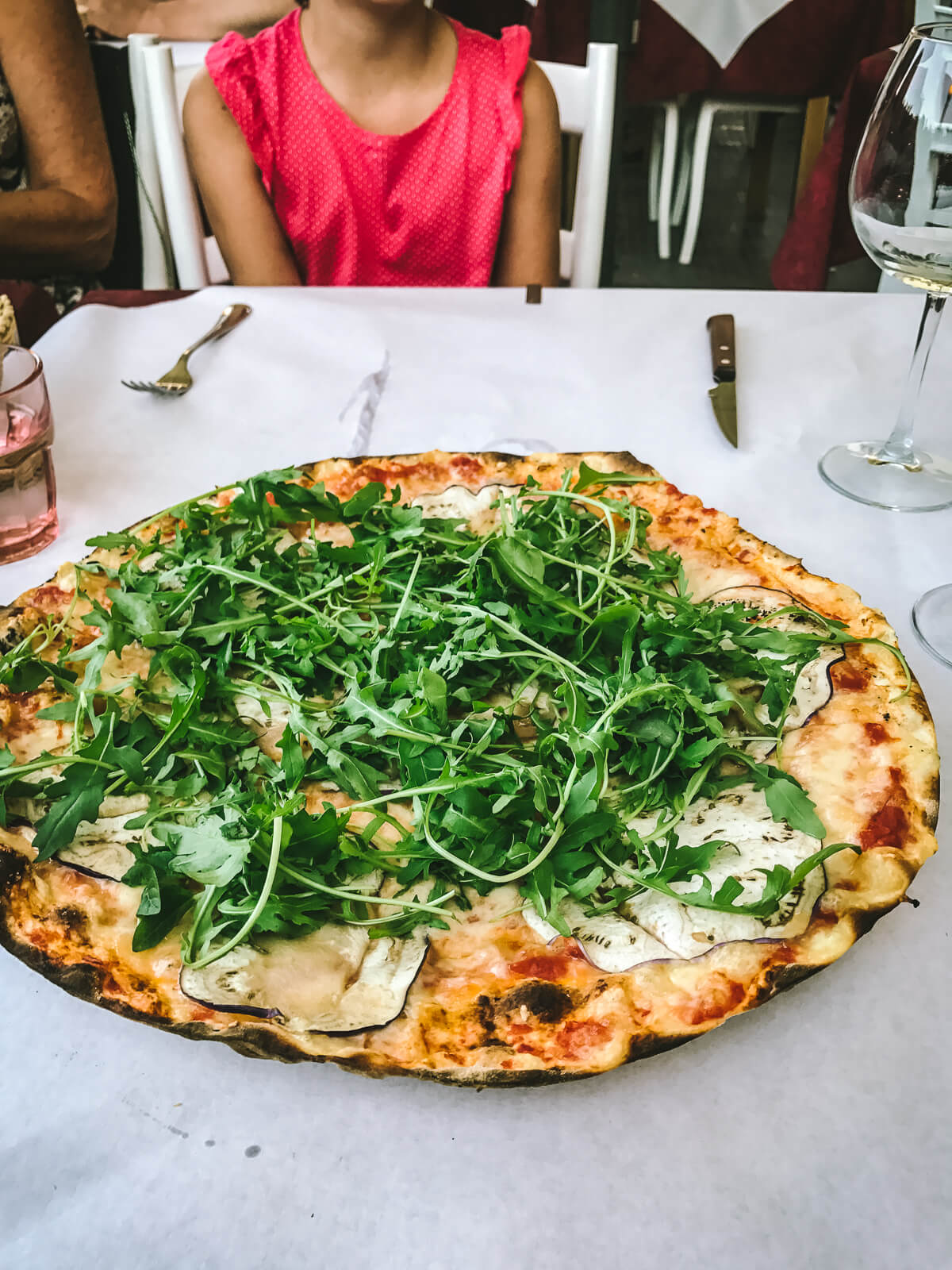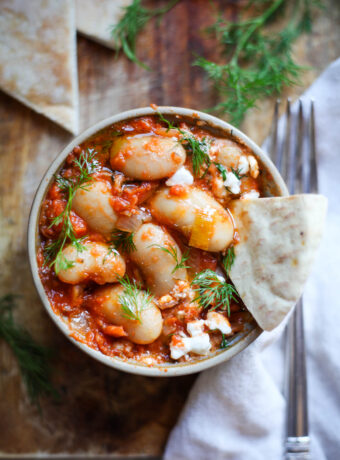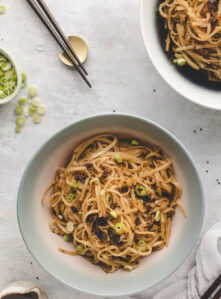pizza sauce vs marinara
Whether cooking at home or ordering at a restaurant, you may be wondering about pizza sauce vs marinara. What’s the difference? And can you use pasta sauce for pizza?

Pizza sauce and marinara are both a type of tomato sauce made with similar ingredients, so it’s understandable there might be some confusion about the differences. Let’s take a look at pizza sauce vs. marinara vs. spaghetti sauce and find out if you can use pasta sauce for pizza.

My typical thin-crust pizza with eggplant and arugula in Chianti, Italy.
Italian-American vs. Authentic Italian Sauces
When considering the difference between pizza sauce and marinara, we must first address whether we are talking about authentic Italian pizza and marinara sauces like we enjoy in Italy, or American-style sauces. The difference is vast, and unless you have tried real Italian pizza and Pomodoro sauces, you may not know.
Most American fast-food pizzas come with very thick and pasty sauces with many seasonings and lots of greasy melted cheese. Traditional Neapolitan pizza, on the other hand, is made with a very simple sauce that consists of DOP San Marzano tomatoes, basil, salt, sometimes garlic, and olive oil. It’s often not even cooked before going onto the pizza.
Pizza Sauce vs Marinara
Pizza sauce and marinara are both important recipes in Italian cuisine. The main difference is that marinara is a traditional tomato sauce meant as a pasta sauce and pizza sauce is meant as a pizza base for toppings.
Pizza and marinara are both traditionally made with simple basic ingredients such as peeled plum tomatoes, garlic, and basil. Authentic Italian versions are very similar both in terms of consistency and ingredients. Though whole peeled canned tomatoes are often used, in the summer I like to make Fresh Tomato Marinara.
To make the most authentic Italian tomato sauces, be sure to look for the certified DOP San Marzano labels.
Let’s look at the ingredients list for one of my favorite Italian tomato sauce brands, Carmelina ‘e…San Marzano®. These are not DOP tomato sauces, but work well as a convenience.
- Pizza Sauce: 100% Italian tomatoes, olive oil, garlic, salt
- Authentic Italian Marinara Sauce: Italian Chopped Tomatoes in Puree, olive oil, onions, garlic, salt, basil, black pepper, oregano
American pizza sauce is usually a tomato-based sauce with a variety of spices added to it, while marinara is a simpler sauce made with tomatoes, garlic, and herbs. This pizza sauce tends to be more flavorful and has a thicker consistency than marinara. Because of its simplicity, marinara is often used as a pasta or dipping sauce, while pizza sauce is used as a pizza topping.
The cooking process is also what differentiates pizza from marinara sauces. Whereas pizza sauce traditionally can be made without cooking before going on the pizza dough, marinara sauce is always simmered on the stove. I make a Naples-style easy homemade pizza sauce with the traditional no-cook method.
What’s the Difference Between Marinara and Spaghetti Sauce?
Marinara is a very simple type of spaghetti sauce, but there are many other recipes we call “spaghetti sauce” as well.
Spaghetti sauce is the English name for a type of red sauce that contains additional ingredients such as onions, carrots, celery, and often ground beef, wild boar, Italian sausage, or other meat. I enjoy mine best with lentils. The Italian word for these hearty “spaghetti sauces” is ragu. Bolognese is another popular type of spaghetti sauce that is similar to a ragu, but typically thinner and made with white wine. This makes a heartier sauce that can be used as a main course, rather than a primi piatto (first course).
If you hear someone mention spaghetti sauce, it’s best to inquire about ingredients, as it may or may not contain meat.
Can you Use Pasta Sauce for Pizza?
Yes! Pasta sauce such as marinara is fine to use as a pizza sauce, as long as you enjoy the flavors of that particular sauce. For Eggplant Pizzas, either pizza or marinara sauce is fine. This all comes down to personal preference.
Pizza sauces can vary greatly from recipe to recipe and even brand to brand. Most made in the U.S. would be a thicker pizza sauce that wouldn’t be ideal for pasta.
Conclusion
As you can see, there is not much difference between pizza and marinara sauces. Both should be made with just a few similar ingredients such as tomatoes, olive oil, garlic, and herbs.
When considering what the difference is between pizza sauce vs marinara, the answer is a bit complicated. American-style pizza sauces are much thicker than marinara, but in Italy, this is often not the case. When it comes to spaghetti sauce vs marinara, well, marinara is a simple, low-calorie spaghetti sauce. But there are many other spaghetti sauce recipes, such as ragu and bolognese.
Feel free to use a really tasty marinara as a pizza sauce. What matters most it that you choose a high-quality sauce made with just a few great ingredients.












Yes! It is acceptable to use a pasta sauce, such as marinara, as a pizza sauce as long as you appreciate the flavors of that driving directions particular sauce. Eggplant Pizzas can be made with either pizza sauce or marinara sauce. It all boils down to personal preference in the end.
I think pizza sauce will enhance flavor as it is very delicious
Thanks for sharing this piece of information. I really enjoyed it. keep up the good work and all the very best of luck
https://www.writingpapersucks.com/edubirdie-com-review/ helped me a lot. When I was looking for a reliable and appreciated online essay writing service, I came across the platform with comprehensive reviews and managed to make the right choice much faster.
wow!! I WOULD LOVE TO SPREAD THIS LOVELY SAUZE TO MY PIZZA YUMMIES. thank YOU YUMMY YUMMY FOR THIS SAUZE
rEGARDS
DELLA @ oil and gas jobs in mangalore
wow!! I WOULD LOVE TO SPREAD THIS LOVELY SAUZE TO MY PIZZA YUMMIES. thank YOU YUMMY YUMMY FOR THIS SAUZE
Thanks for sharing! Keep up the work and keep sharing posts like this for more visits take my class help
thanks for this! this recipe is easy plus delicious. CHECK THIS OUT IF YOU DELIVER FOOD AND WANT TO AVOID INCONVENIENCE flatbed towing services
looks amazing you can also enjoy most comfy and gander neutral clothing for kids use primary coupon code